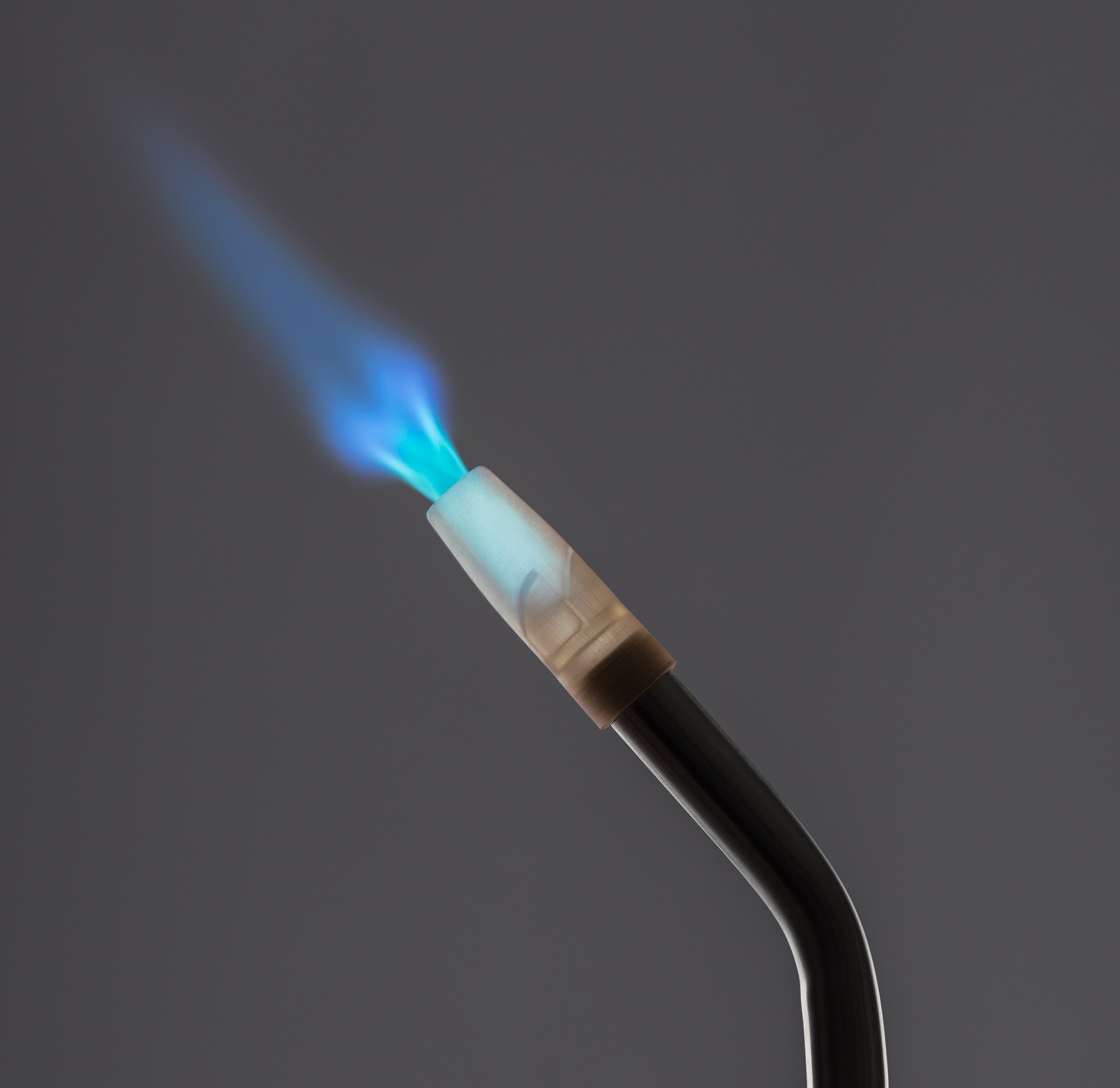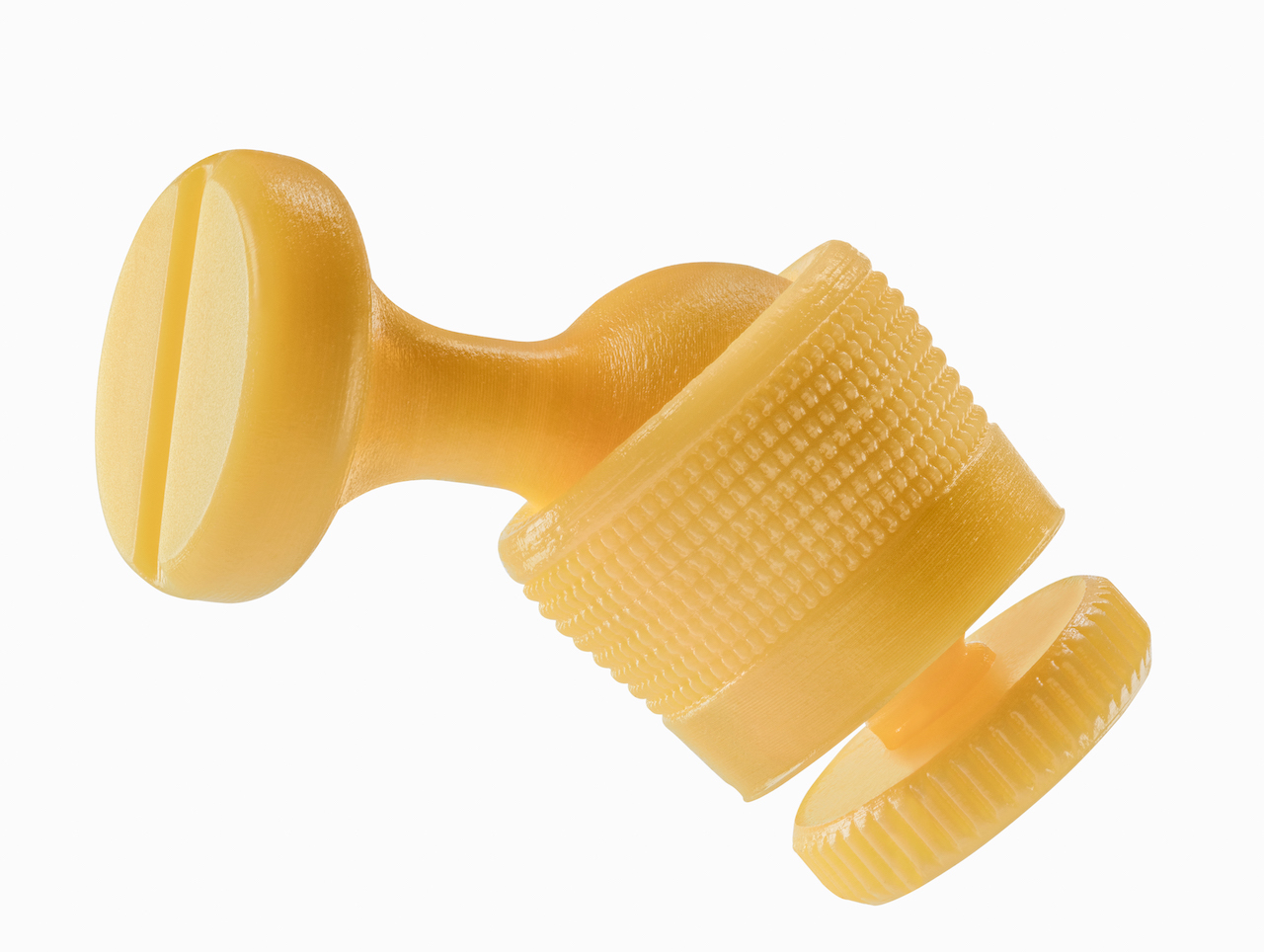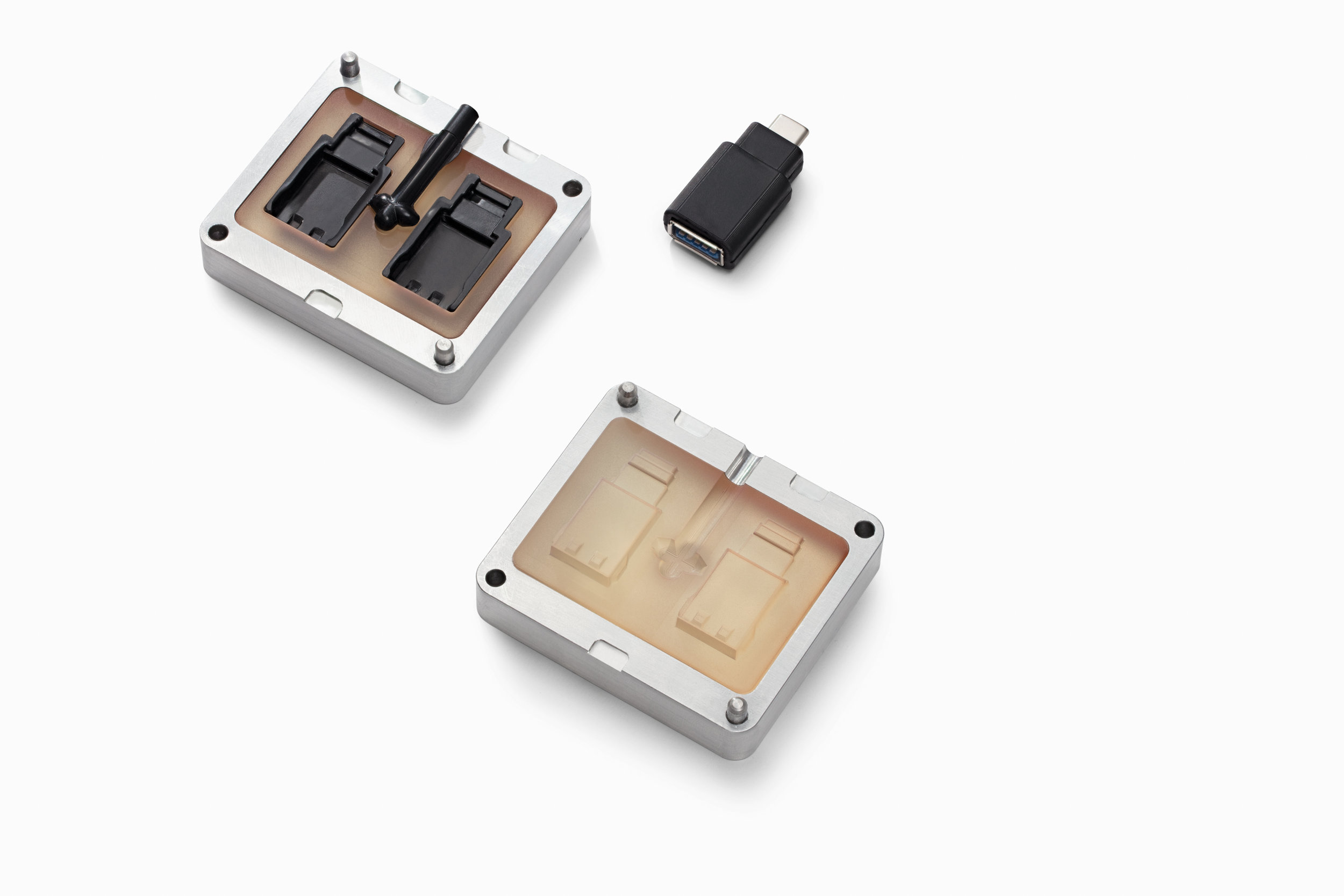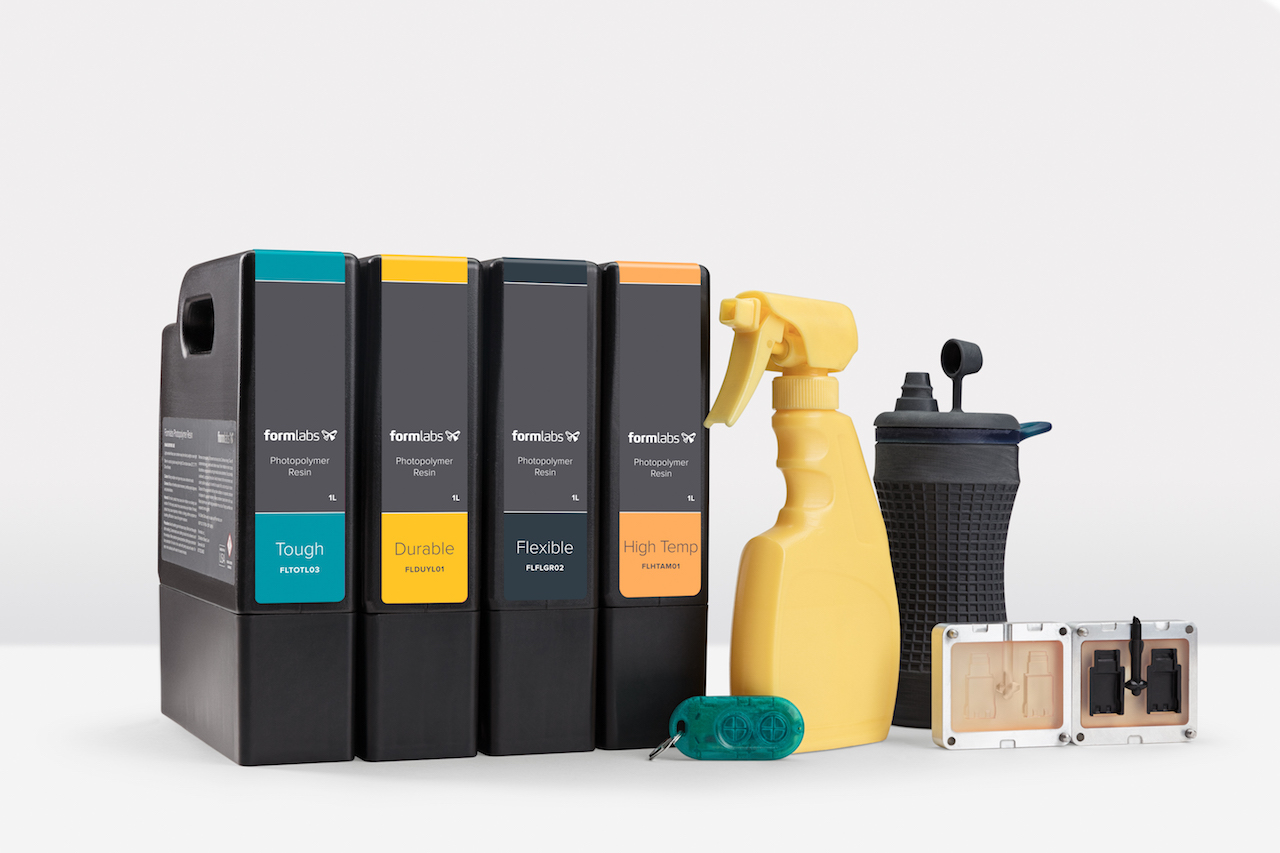
Today Formlabs announced a trio of new “engineering” resins for use in their desktop 3D printer, but one of them has a very special property.
First, though, they’ve announced what they call “Durable Resin”, described as follows:
For users looking to print parts that bend without breaking, Durable Resin is a wear-resistant, ductile material that simulates the stiffness and smooth, glossy finish of everyday plastics. With stiffness and high-impact strength comparable to polypropylene (PP) plastic, Durable Resin is ideal for applications from prototyping consumer products to packaging.

This resin appears extremely useful in a number of prototyping and production situations.
They’ve also announced a new “Tough Resin”, which is a reformulation of their previous mix. While I don’t have the specifications for “Tough”, they say it is “even closer” to “injection-molded ABS”. That’s good too.
But what’s of most interest to me is their entirely new “High Temp Resin”.
Yes, there are high-temp materials on the market already for other 3D printers, such as the popular ULTEM from Stratasys. However, Formlab’s HTR is different, because it has a heat deflection temperature (the temperature at which the material begins to deform given a specified load) of a huge +289C @ 0.45 MPa.
To put this in perspective, the spec sheet for Stratasys’ ULTEM indicates a heat deflection temperature of +153C @ 1.82 MPa, 0.125”, so in certain mechanical scenarios Formlabs has an advantage.
Using this new material, Formlabs users could 3D print components usable in many high temperature situations, such as ovens, engines, hot fluid piping and much more.
But this is the important part: Formlabs’ HTR will be applicable in particular situations that Stratasys’ ULTEM cannot match.

And there’s more. Due to the differences in 3D printing processes, it is unlikely that Stratasys could match this temperature level with their materials.
Why? Because the Stratasys equipment uses the FDM process, in which the plastic is melted and extruded. To do this the extruder’s hot end temperature must exceed the deformation temperature of the material. In other words, you gotta have a really hot machine to 3D print high temperature materials if using FDM or similar processes.
Meanwhile, Formlabs’ process uses photopolymers, where resin solidification occurs at room temperature. Formlabs can produce high temperature objects WITHOUT HEAT. In fact, it’s possible they may even be able to develop resins that have even higher heat resistance in the future, without requiring any modification to their equipment. If Stratasys wished to produce a higher temperature material using FDM, they would most likely have to alter their machine to utilize much higher temperatures.
That could be a significant advantage to Formlabs over Stratasys’ FDM process.
However, there are a couple of caveats.
First, the Formlabs HTR may or may not meet other engineering requirements. For example, it may not be sufficiently strong for certain applications, yet still withstand high temperatures.
Secondly, the size of range of applications of the new material is unclear. It may be large – or it may be tiny. Only the users will know this.
And finally, Stratasys as a competitor has not only the FDM process at their disposal, but also a resin process called PolyJet. It’s entirely possible that Stratasys could develop a similar high-temperature resin for use in their machines.

But for the moment, Formlabs has released a very intriguing material.
Via Formlabs

